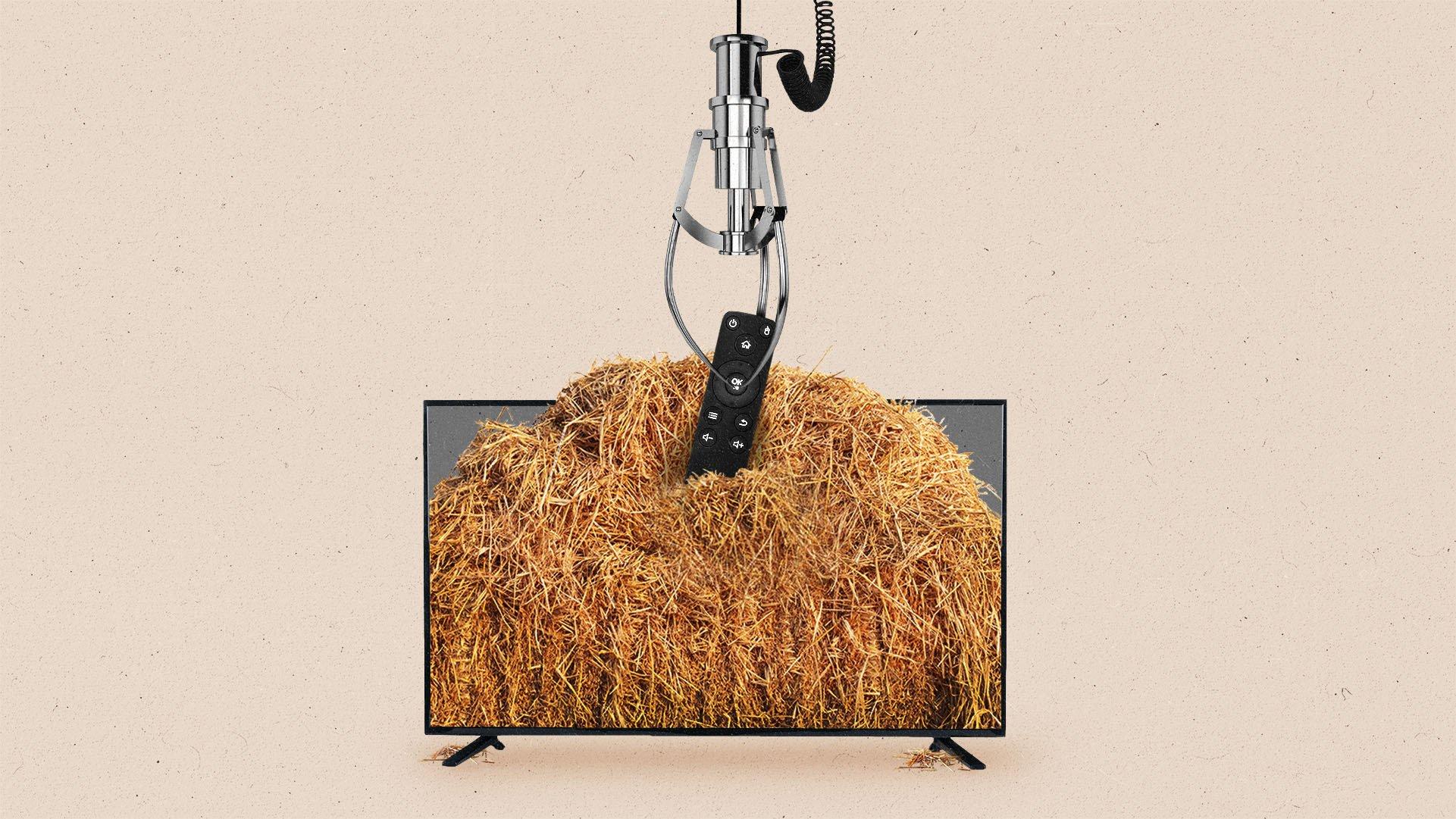Don’t know what show to stream next? AI can help

Artificial intelligence may revolutionize what you stream — starting with helping you pick the perfect show.
“Twenty years ago, we spent a lot of time seeking things out,” says Julia Alexander, senior strategy analyst at Parrot Analytics. “Now we literally browse things […] We don’t seek it out. It seeks us out.”
It takes the average person 10.5 minutes to select what show to watch, according to Bloomberg. Thanks to AI’s analytical power, this process can be enhanced by advanced algorithms and used to create contextual suggestions. This can not only save customers time in making those viewing decisions, but can also increase their engagement and lead to longer binge-session times, Alexander points out. Most importantly, it can decrease time spent with other competitors and make a person more likely to stay subscribed.
“It’s probably one of the most important tools being deployed right now,” she says.
More than 9 out of 10 Americans surveyed have at least one streaming service, per Forbes. About half of them have about three companies they subscribe to, and on average respondents were spending $552 annually on streaming services. But with so many options out there and budgets getting slim, competition is fierce. AI can help empower streaming services to create specialized content profiles.
“The problem that we have with streamers today is people are leaving their platform,” says Tom Roach, chief vertical strategist at technology solutions provider TEKsystems. “They might join Netflix for two months, then they cancel their subscription. We’re getting to the point where they can cater to a specific persona and just not a broad set of 20 personas.”
Algorithms have been used for quite some time, but AI can sort through meta tags, themes and genres faster than ever before. It also can make the need for human-led curation less important. But the real game changer comes in the field of contextual analytics augmented by AI. The programs can look at a customer’s average consumption habits and suggest what they might want to watch next. For example, if someone watches The Handmaid’s Tale, are they the kind of person who wants to stick with another gloomy hourlong drama? Or would they want to switch to a lighter comedy for a little bit?
“We’re faced with a paradox of choice,” Parrot Analytics’ Alexander says. “If people spend too much time choosing, they may do something else or go to bed. With stronger automation , AI can reduce costs and hypothetically get stronger results.”
AI can not only help these platforms suggest what customers should watch next, but it can also help marketers who want to reach the right customers at the appropriate time. By understanding user viewing habits, it can theoretically make suggestions on which content will likely perform better on an ad-supported tier versus an ad-free tier, Alexander says. It can also tailor advertising to the viewer, if it knows they’re more likely to watch an NBA game on a Tuesday evening and end the night watching an episode of The Simpsons.
In addition, AI can make recommendations to brands on where they should be placing their ads. The technology could help identify key moments in a show, like when Gordon Ramsay is on screen in an episode of Kitchen Nightmares, so brands know when people will likely be engaged.“One thing that’s going to be really important in the future as you move forward is using good old-fashioned product placement in content, like determining in a scene where you should have a Pepsi can,” says TEKsystems’ Roach, who was formerly SVP of technology at Warner Bros. Entertainment. “As those things become shoppable and clickable, being able to determine a context where you have these products and allowing your subscriber or your viewer to interact with them is a fast-growing segment.”
This isn’t to say that AI can work without people. Roach points out that while AI can write subtitles and synopses at a faster rate, it still won’t replace human creativity when it comes to creating content. What’s more, key to every platform’s subscriber strategy is making sure they have catchy, viral shows and movies.
“It’s really dangerous to really start to take the creative element and the person out of that process,” Roach says. “I think it’s great for enabling your content and enabling better data, but it could really backfire on them as they start trying to generate more shows using AI.”
We still need people to run the companies, after all — for now.
“When we think about AI, I think there’s a misconception that AI will take over,” Alexander says. “What A.I. is going to do is allow people to do things at a faster rate with its tools.”
“AI can’t have the negotiations that a business-affairs team can have,” she adds.
Subscribe to The Current
Subscribe to The Current newsletter